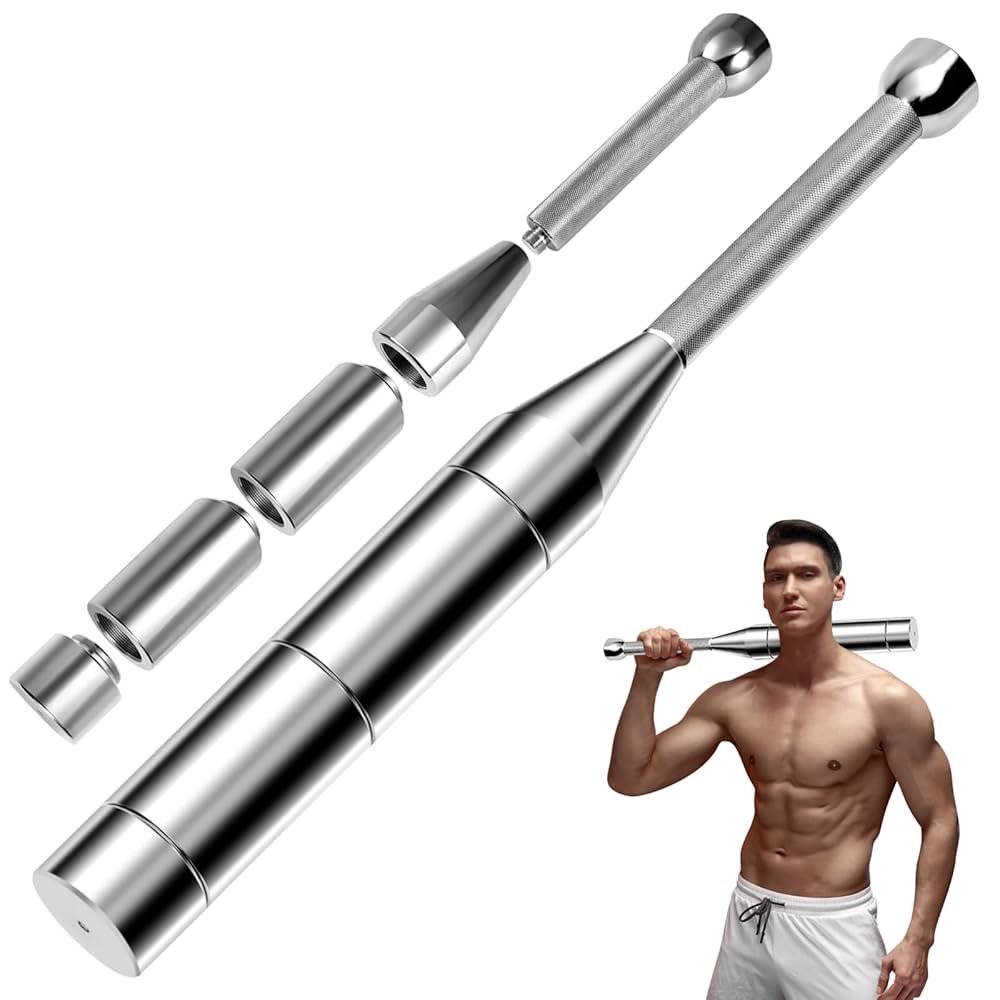Choosing the right weight for your first macebell can make all the difference in your progress and safety. You might be wondering, “How heavy should a macebell be to start with?”
Picking a weight that’s too heavy can lead to injury and frustration, while one that’s too light may leave you feeling like you’re not making any gains. This article will guide you step-by-step to find the perfect starting weight tailored just for you.
Keep reading, and you’ll discover simple tips that help you build strength confidently and avoid common mistakes beginners make. Your journey to mastering the macebell starts here.
Choosing The Right Weight
Picking the right macebell weight is important for safety and progress. The weight you start with affects how well you learn the moves.
Too heavy a macebell can cause injury or poor form. Too light might not build strength effectively. Choose wisely to get the best results.
Factors To Consider
Your fitness level and experience matter when choosing macebell weight. If you are new to strength training, start lighter.
Also, consider your goals. For endurance, use lighter weights. For strength, pick heavier ones but still manageable.
- Current strength and fitness level
- Experience with macebell or similar tools
- Training goals like strength or endurance
- Ability to maintain good form
- Any previous injuries or physical limits
Common Starting Weights
For beginners, common starting weights range between 5 to 15 pounds. Women often start around 5 to 10 pounds.
Men new to macebells usually begin with 10 to 15 pounds. These weights help learn control and technique safely.
- Women: 5 to 10 pounds
- Men: 10 to 15 pounds
- Experienced users may start heavier
- Always choose a weight you can swing with control
Weight Progression Tips
Increase macebell weight gradually to avoid injury. Add small weight increments when your form stays good.
Focus on technique before lifting heavier. Progress slowly by adding 2 to 5 pounds at a time.
- Track your form and comfort with current weight
- Move to heavier weights only when confident
- Increase weight by small steps (2-5 pounds)
- Rest well between training sessions
- Listen to your body and avoid pain
Assessing Your Strength Level
Choosing the right macebell weight is important to start safely. Your strength level helps decide the best weight.
Understanding your body and fitness will guide you to pick a macebell that fits your needs.
Bodyweight And Fitness
Your bodyweight and general fitness affect the macebell weight you should use. Heavier people with good fitness can handle more weight.
If you weigh less or are new to fitness, start with a lighter macebell to avoid injury.
- People under 150 lbs should try 5-10 lbs macebells
- 150-200 lbs can start with 10-15 lbs
- Above 200 lbs may use 15-20 lbs or more
- Fitness beginners should use lighter weights regardless of bodyweight
Previous Training Experience
Your past training matters. If you have experience with weights, you can start with a heavier macebell.
New to weight training should pick a lighter macebell to learn form and build strength.
- Experienced lifters can begin with 15-20 lbs macebells
- Beginners should start with 5-10 lbs
- Those with joint issues should select the lightest weight
- Regular exercisers but new to macebells should start medium weight
Types Of Macebells
Macebells are unique workout tools used for strength and conditioning. They come in different types to fit your training needs.
Choosing the right type helps you start safely and improve effectively. Let’s look at two key differences.
Standard Vs. Adjustable
Standard macebells have a fixed weight. You pick one that fits your strength level. Beginners usually start with lighter weights.
Adjustable macebells let you change the weight. This saves money and space. You can increase weight as you get stronger.
- Standard macebells: simple, no changes, good for beginners
- Adjustable macebells: flexible, grow with you, may cost more
Material And Grip Differences
Macebells come in different materials like steel or coated metal. Steel is durable but can be hard on hands.
Coated macebells have a softer grip. This helps prevent slipping and reduces hand pain during workouts.
- Steel macebells: strong, heavy, may need gloves
- Coated macebells: comfortable grip, less slippery, good for beginners

Safety And Technique
Choosing the right macebell weight is important for safety and good technique. Start with a weight that feels comfortable to control.
Using too heavy a macebell can cause bad form and increase injury risk. Learn proper technique before adding weight.
Proper Form Basics
Good form helps you get the most from your macebell workout. Stand straight and keep your core tight.
Hold the macebell firmly but not too tight. Move smoothly to keep control at all times.
- Keep your wrists neutral, not bent
- Use your hips and shoulders to swing
- Keep your feet shoulder-width apart
- Start with slow, controlled movements
Avoiding Injuries
Start with a light macebell to avoid strain. A weight between 5 and 10 pounds is good for beginners.
Listen to your body. Stop if you feel sharp pain or discomfort during exercises.
- Warm up before each session
- Focus on form over speed or weight
- Take breaks if muscles feel tired
- Use a spotter or trainer if possible
Training Frequency And Volume
Choosing the right macebell weight depends on how often you train. Training frequency means how many times you work out each week.
Volume means how much work you do during each session. Both affect the weight you should start with.
Setting Realistic Goals
Start with a macebell weight that lets you practice good form. Pick a weight you can control for 8 to 12 reps.
Set goals based on your training schedule. If you train 2-3 times a week, use a lighter macebell to avoid injury.
- Train 2-3 times weekly: Start with 5-10 lbs (2.3-4.5 kg)
- Train 4-5 times weekly: Use a lighter weight around 5 lbs (2.3 kg)
- Focus on slow, controlled movements to build strength
Rest And Recovery
Rest days are important to let your muscles recover. Recovery helps prevent soreness and injury.
If you train often, choose a lighter macebell to reduce stress. Take at least one day off after heavy sessions.
- Rest 24-48 hours between macebell workouts
- Use active recovery like stretching or light cardio
- Listen to your body and avoid training through pain

Where To Buy And Try Macebells
Choosing the right macebell weight is important for safe training. Finding the right place to buy or try macebells helps you pick the best option.
You can buy macebells online or in physical stores. Trying different weights before buying can help you decide what feels right.
Online Vs. In-store Options
Online stores have many macebell styles and weights. You can compare prices and read reviews easily.
In-store shopping lets you hold and swing the macebell. This helps you test comfort and weight before buying.
- Online: Wide selection, convenient shopping
- Online: Shipping time and cost apply
- In-store: Try before you buy
- In-store: Limited stock and locations
Testing Different Weights
Start with a light macebell to learn proper form. Testing weights helps avoid injury and improves training.
Try swinging macebells from 5 to 15 pounds. Find a weight that challenges you but feels safe.
- Use 5-8 pounds for beginners and warm-ups
- Try 10-15 pounds for more strength and control
- Increase weight as your skill and strength grow

Frequently Asked Questions
What Is The Ideal Starting Weight For A Macebell?
For beginners, a macebell weighing 10 to 15 pounds is ideal. It allows proper form and control while building strength. Starting too heavy can cause injury or poor technique.
How To Choose The Right Macebell Weight?
Choose a weight that challenges you but doesn’t strain your muscles. Test different weights to ensure smooth, controlled swings and comfortable grip.
Can Beginners Use Heavy Macebells Safely?
No, beginners should avoid heavy macebells initially. Starting with lighter weights helps develop technique and prevents injury. Gradually increase weight as strength improves.
Does Macebell Weight Affect Workout Effectiveness?
Yes, the right weight ensures effective muscle engagement and balance. Too light may lack challenge; too heavy can compromise form and safety.
Conclusion
Starting with the right macebell weight is crucial. A lighter macebell helps build confidence. It reduces the risk of injury. As strength grows, gradually increase the weight. Listen to your body. Everyone progresses differently. Stay patient and enjoy the process.
This approach ensures safe and effective training. Remember, consistency matters more than weight. Seek advice if unsure. Proper guidance leads to better results. Keep practicing, and you’ll improve over time. Enjoy your macebell journey with care and confidence.



